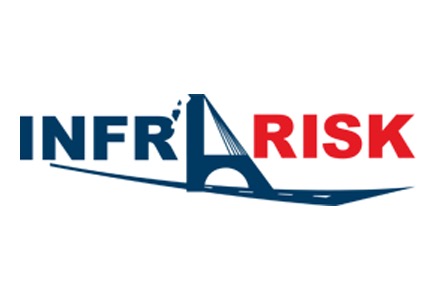INFRARISK

INFRARISK was a three-year collaborative R&D project funded by the EC to develop a stress test framework to tackle the coupled impacts of natural hazards on interdependent infrastructure networks through:
- Identifying rare low-frequency natural hazard events, which have the potential to have extreme impacts on critical infrastructure.
- Developing a stress test structure for specific natural hazards on CI networks and a framework for linear infrastructure systems with wider extents and many nodal points (roads, highways and railroads), though it is anticipated the outputs can be applied across a variety of networks (e.g telecom and energy).
- An integrated approach to hazard assessment considering the interdependencies of infrastructure networks, the correlated nature of natural hazards, cascading hazards and cascading effects, and spatial and temporal vulnerability.
- Facilitate implementation through the development of GIS based and web based stress test algorithms for complex infrastructure networks.
- Testing the framework developed through simulation of complex case studies.
- Exploitation strategies aimed at disseminating the 'knowledge' and not just the results (e.g training courses to industry, academic and media parties).
IT Innovation's Role
The methodological core of the project was based on the establishment of an 'overarching methodology' to evaluate the risks associated with multiple infrastructure networks for various hazards with spatial and temporal correlation. IT Innovation had a leading role in the implementation strategy of the project, designing and developing a strategic INFRARISK Decision Support Tool (IDST) to ensure practical integration of the INFRARISK stress tests and harmonised risk management methods, driven by a specific process workflow engine.
The IDST tool represents a significant advance on the applicability of the risk-based methodologies with regard to the resilience of transport infrastructure. This allows calculation of the risks and robustness of infrastructure impacted by natural disasters such as earthquakes, landslides and flooding.
The IDST represents a workflow that incorporates functions for:
- Identification of Hazards and Risks
- Calculating the potential impact of risks
- Deploying mitigation measures for reducing risks
Interested readers may also see a peer-reviewed paper on this work:
An Integrated Decision-Support Information System on the Impact of Extreme Natural Hazards on Critical Infrastructure
— Zoheir Sabeur, Panos Melas and Ken Meacham in collaboration with Roughan & Donovan Innovative Solutions, Ireland; University College London, Department of Civil, Environmental and Geomatic Engineering, UK and ETHZ, Switzerland.
Project Fact Sheet
The INFRARISK project was a 35 month project funded by the EC FP7 framework programme.
Coordinator: Roughan and O' Donovan Limited, Ireland
Website: https://www.infrarisk-fp7.eu
More information: https://cordis.europa.eu/project/rcn/110820_en.html
 INFRARISK has received EC research funding.
INFRARISK has received EC research funding.